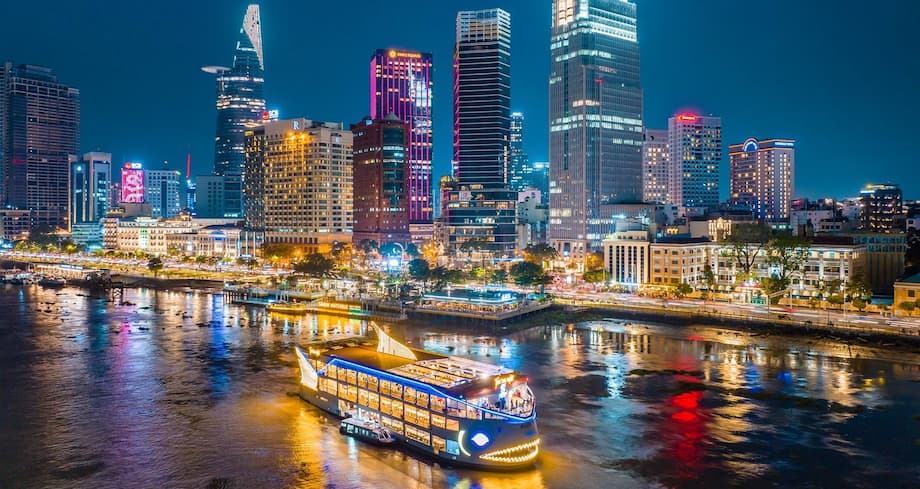Why Asia Is a Top Choice for English-Speaking Travelers
Asia’s vast landscapes, rich cultures, and vibrant cities have long attracted travelers from around the world. For English speakers, the prospect of exploring this diverse continent can be both thrilling and daunting. The good news: many Asian countries are remarkably English-friendly, making travel easier, more accessible, and deeply rewarding. Whether you’re seeking bustling metropolises, tranquil beaches, or ancient heritage sites, Asia offers destinations where language barriers are minimal and unforgettable experiences abound.
- Why Asia Is a Top Choice for English-Speaking Travelers
- Singapore: Asia’s English-Speaking Powerhouse
- The Philippines: Islands of Hospitality and English Fluency
- Malaysia: Multicultural Marvel with High English Proficiency
- Thailand: The Land of Smiles Welcomes English Speakers
- Vietnam: A Rising Star for English-Speaking Travelers
- South Korea: Tradition Meets Modernity in an English-Friendly Setting
- India: A Land of Diversity Where English Bridges Cultures
- Hong Kong: East Meets West in a Bilingual Metropolis
- Bali, Indonesia: A Tropical Haven for English Speakers
- Other Noteworthy Destinations: Japan, Taiwan, and Beyond
- Traveling Asia as an English Speaker: Tips and Insights
- Long-Term Stays and Retirement: Asia’s Appeal for English Speakers
- Family and Senior-Friendly Destinations
- In Summary
This guide explores the best Asian countries for English-speaking travelers, drawing on expert rankings, traveler testimonials, and up-to-date research. We’ll highlight where English is widely spoken, what makes each destination unique, and how to make the most of your journey—whether you’re a solo adventurer, a family, or even considering a long-term stay.
Singapore: Asia’s English-Speaking Powerhouse
Singapore stands out as the most English-speaking country in Asia. English is one of its four official languages and is used in government, business, education, and daily life. This multicultural city-state is a model of modernity, safety, and efficiency, making it a favorite for first-time visitors and seasoned travelers alike.
From the futuristic Gardens by the Bay to the bustling hawker centers serving up world-class cuisine, Singapore blends tradition and innovation seamlessly. The city’s public transport system is easy to navigate, with clear English signage and announcements. Attractions like Marina Bay Sands, Chinatown, and Little India offer a taste of the city’s diversity, while family-friendly spots such as Universal Studios and the Children’s Museum ensure there’s something for everyone.
Singapore’s reputation as a travel hub also means it’s a convenient starting point for exploring the rest of Southeast Asia. Its cleanliness, safety, and accessibility make it ideal for families, solo travelers, and seniors alike.
The Philippines: Islands of Hospitality and English Fluency
With over 7,000 islands, the Philippines is a paradise for beach lovers, adventure seekers, and cultural explorers. English is one of the country’s two official languages, making communication effortless for visitors. From the white sands of Boracay to the dramatic landscapes of Palawan and the vibrant city life of Manila and Cebu, the Philippines offers a wealth of experiences at affordable prices.
Travelers consistently praise the friendliness of locals and the ease of getting around. English is used in schools, government, and media, and most signs, menus, and tourist information are in English. The country’s affordability makes it especially attractive for budget travelers, while its natural beauty and rich history ensure there’s always something new to discover.
Whether you’re diving in Coron, exploring the rice terraces of Banaue, or enjoying the vibrant festivals, the Philippines is a top choice for English speakers seeking adventure and connection.
Malaysia: Multicultural Marvel with High English Proficiency
Malaysia is a tapestry of cultures, cuisines, and landscapes. English is widely spoken, especially in cities like Kuala Lumpur, Penang, and Malacca, as well as in tourist hotspots. The country’s colonial history and diverse population mean that English is commonly used in business, education, and daily interactions.
Recently, an American tourist’s viral praise of Malaysians’ English skills sparked debate online. While some argue that Singapore and the Philippines have higher proficiency, Malaysia consistently ranks among the top Asian countries for English fluency. According to the 2024 EF English Proficiency Index, Malaysia is just behind Singapore and the Philippines, making it an excellent destination for English-speaking travelers.
One American traveler shared, “Malaysians overall speak far better English than practically any other Asian country,” highlighting the ease of communication and the welcoming attitude toward tourists.
Malaysia’s appeal goes beyond language. From the skyscrapers of Kuala Lumpur to the UNESCO-listed streets of George Town, Penang, lush jungles, and idyllic islands, the country offers something for every traveler. Penang, in particular, is noted for its affordability, food scene, and accessible attractions, making it a favorite for families and retirees alike.
Thailand: The Land of Smiles Welcomes English Speakers
Thailand is renowned for its hospitality, vibrant culture, and stunning landscapes. English is widely spoken in tourist areas such as Bangkok, Chiang Mai, Phuket, and Koh Samui. Signs, menus, and public transport information are often available in English, and many Thais working in tourism have a good command of the language.
From the ornate temples and bustling markets of Bangkok to the tranquil beaches of the south and the mountainous north, Thailand offers a diverse array of experiences. The country’s affordability, safety, and well-developed tourist infrastructure make it especially popular with solo travelers, families, and retirees.
Travelers can enjoy world-famous street food, attend colorful festivals, and explore ancient ruins—all with the confidence that communication will rarely be a barrier. Wellness retreats, adventure tours, and cultural experiences abound, ensuring a memorable visit for every type of traveler.
Vietnam: A Rising Star for English-Speaking Travelers
Vietnam has rapidly become one of Asia’s most popular destinations, thanks to its breathtaking scenery, rich history, and vibrant cities. While Vietnamese is the official language, English is increasingly common in major cities like Hanoi, Ho Chi Minh City, and tourist hotspots such as Hoi An and Da Nang.
Tourism infrastructure has improved dramatically, with English-speaking guides, hotel staff, and restaurant workers making travel easier. Signs and menus in English are widespread in tourist areas. Vietnam’s affordability, unique cuisine, and variety of experiences—from the lantern-lit streets of Hoi An to the dramatic limestone karsts of Ha Long Bay—make it a favorite for English-speaking travelers.
Hoi An, in particular, has been recognized as one of Asia’s top family-friendly destinations, offering a relaxed pace, accessible attractions, and a welcoming atmosphere for visitors of all ages.
South Korea: Tradition Meets Modernity in an English-Friendly Setting
South Korea, especially its capital Seoul, is increasingly accessible to English speakers. Public transportation features English signage and announcements, and many younger Koreans and those in the service industry speak at least basic English. Seoul’s blend of ancient palaces, cutting-edge technology, and vibrant street life offers a unique travel experience.
A recent traveler noted, “I don’t think any city I visited in [Europe] has been as easy to navigate as a native English speaker as Seoul has. Most public transit has English names for things under the Korean ones, as do the menus and things at a lot of businesses.”
South Korea’s global pop culture influence, modern infrastructure, and welcoming attitude make it a rising star for English-speaking tourists. Beyond Seoul, destinations like Busan and Jeju Island offer natural beauty, unique cuisine, and a glimpse into Korea’s rich heritage.
India: A Land of Diversity Where English Bridges Cultures
India is a vast and complex country where English serves as a second language and a bridge between its many regions and cultures. English is widely used in government, education, business, and tourism, making it relatively easy for visitors to communicate, especially in urban centers and popular tourist destinations.
From the iconic Taj Mahal in Agra to the bustling streets of Delhi and Mumbai, the spiritual city of Varanasi, and the serene backwaters of Kerala, India offers a dizzying array of experiences. The country’s festivals, cuisine, and natural wonders—from tiger reserves to the Himalayas—ensure that every visit is unique.
While India can be overwhelming for first-time visitors, the widespread use of English, availability of English-speaking guides, and established tourist routes make it accessible for those willing to embrace its contrasts and complexities.
Hong Kong: East Meets West in a Bilingual Metropolis
Hong Kong is a dynamic city where English and Cantonese are both official languages. The city’s colonial history has left a legacy of bilingual signage, English-speaking staff in hotels and restaurants, and a cosmopolitan atmosphere that welcomes travelers from around the world.
From the neon-lit streets of Mong Kok to the tranquil trails of Dragon’s Back and the iconic Victoria Peak, Hong Kong offers a blend of urban excitement and natural beauty. Public transport is efficient and easy to navigate, with announcements and signs in both English and Chinese. The city’s food scene, shopping, and cultural attractions make it a must-visit for English-speaking travelers seeking a taste of East and West.
Bali, Indonesia: A Tropical Haven for English Speakers
Bali is Indonesia’s most famous island and a beloved destination for travelers from Australia, Europe, and beyond. English is widely spoken in tourist areas such as Ubud, Seminyak, and Kuta, thanks to the island’s reliance on international tourism. Hotels, restaurants, and tour operators cater to English-speaking guests, making it easy to arrange activities, transportation, and accommodations.
Bali’s appeal lies in its lush rice terraces, vibrant arts scene, stunning beaches, and spiritual culture. Whether you’re seeking relaxation, adventure, or cultural immersion, Bali offers a welcoming environment for English speakers. The island’s affordability, safety, and abundance of fellow travelers make it especially popular with solo adventurers and digital nomads.
Other Noteworthy Destinations: Japan, Taiwan, and Beyond
While not as English-proficient as Singapore or the Philippines, countries like Japan and Taiwan are making strides in accommodating English-speaking visitors. Major cities such as Tokyo, Kyoto, and Osaka feature English signage, and tourism infrastructure is increasingly geared toward international guests. Japan’s efficient rail system, cultural depth, and safety make it a rewarding destination for those willing to navigate occasional language challenges.
Taiwan’s capital, Taipei, is known for its friendliness, accessibility, and growing English-speaking community. Both countries offer unique experiences, from cherry blossoms and ancient temples to cutting-edge technology and world-class cuisine.
Traveling Asia as an English Speaker: Tips and Insights
While English is widely spoken in many Asian countries, it’s always helpful to learn a few basic phrases in the local language and to approach interactions with patience and respect. Here are some practical tips for English-speaking travelers:
- Use translation apps: These can bridge gaps in less touristy areas.
- Book tours with English-speaking guides: Most major attractions offer this option.
- Stay in international hotels or hostels: Staff are more likely to speak English.
- Look for English signage: Airports, train stations, and tourist sites often provide information in English.
- Be patient and polite: A smile and a friendly attitude go a long way.
Long-Term Stays and Retirement: Asia’s Appeal for English Speakers
Asia is not just for short-term visitors. Many countries offer attractive options for retirees and long-term residents. Thailand, Malaysia, Vietnam, and Indonesia (especially Bali) are popular for their low cost of living, warm climates, and welcoming expat communities. Singapore, while more expensive, offers world-class healthcare, safety, and a high standard of living.
Each country has its own visa and residency requirements, so careful planning is essential. Retirees and digital nomads are drawn to Asia’s affordability, cultural richness, and the ease of finding English-speaking services and communities.
Family and Senior-Friendly Destinations
Asia is increasingly catering to families and senior travelers. Destinations like Singapore, Hoi An (Vietnam), Penang (Malaysia), and Kyoto (Japan) offer accessible attractions, safe environments, and activities for all ages. Senior-friendly features such as barrier-free public transport, healthcare access, and inclusive design are becoming more common, especially in cities like Singapore, Seoul, and Taipei.
In Summary
- Singapore is the most English-speaking country in Asia, offering safety, modernity, and multicultural experiences.
- The Philippines boasts widespread English fluency, stunning islands, and affordability.
- Malaysia is a multicultural destination with high English proficiency and diverse attractions.
- Thailand welcomes English speakers with its hospitality, affordability, and vibrant culture.
- Vietnam is increasingly English-friendly, with rich history and natural beauty.
- South Korea (especially Seoul) offers modern infrastructure and a welcoming attitude toward English speakers.
- India uses English as a second language, making its vast diversity accessible to travelers.
- Hong Kong is a bilingual metropolis blending East and West.
- Bali, Indonesia is a tropical haven where English is widely spoken in tourist areas.
- Other destinations like Japan and Taiwan are increasingly accommodating to English-speaking visitors.
- Asia offers options for families, seniors, solo travelers, and retirees, with English-speaking services widely available in top destinations.




